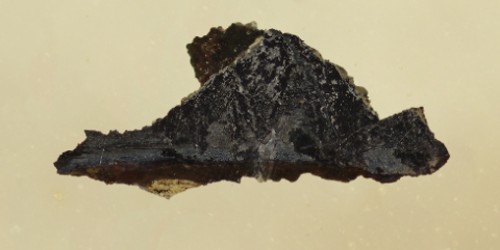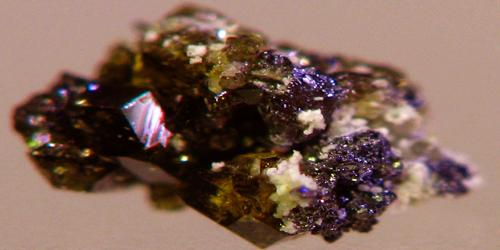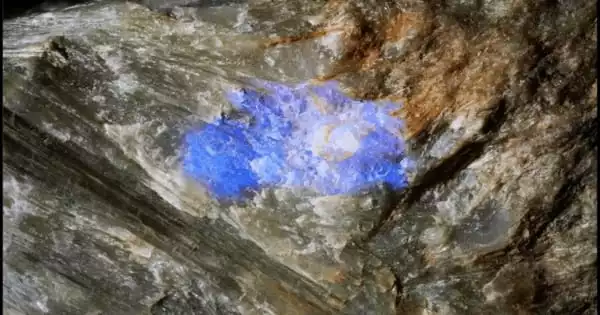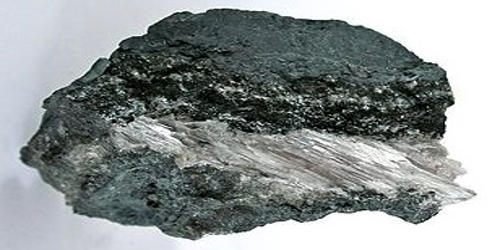Haxonite is an iron-nickel carbide mineral found in iron meteorites and carbonaceous chondrites. It has a chemical formula of (Fe, Ni)23C6, crystallizes in the cubic crystal system and has a Mohs hardness of 5.5 – 6. It is iron-nickel carbide mineral.
It was first described in 1971 and named after Howard J. Axon (1924–1992), a metallurgist at the University of Manchester, Manchester, England. Co-type localities are the Toluca meteorite, Xiquipilco, Mexico and the Canyon Diablo meteorite, Meteor Crater, Coconino County, Arizona, US.
General Information
- Formula: (Fe, Ni)23C6
- Specific Gravity: 7.70 (Calculated)
- Crystal System: Isometric
- Transparency: Opaque

Fig: Haxonite – an iron-nickel carbide mineral
Properties
- Color: Tin white.
- Density: 7.7
- Diaphaneity: Opaque
- Habit: Microscopic Crystals – Crystals visible only with microscopes.
- Hardness: 5.5-6 – Knife Blade-Orthoclase
- Luster: Metallic
Occurrence: In iron meteorites and carbonaceous chondrites. It occurs associated with kamacite, taenite, schreibersite, cohenite, pentlandite, and magnetite.
Association: Kamacite, taenite, schreibersite, cohenite, pentlandite, magnetite.
Information Source:
















